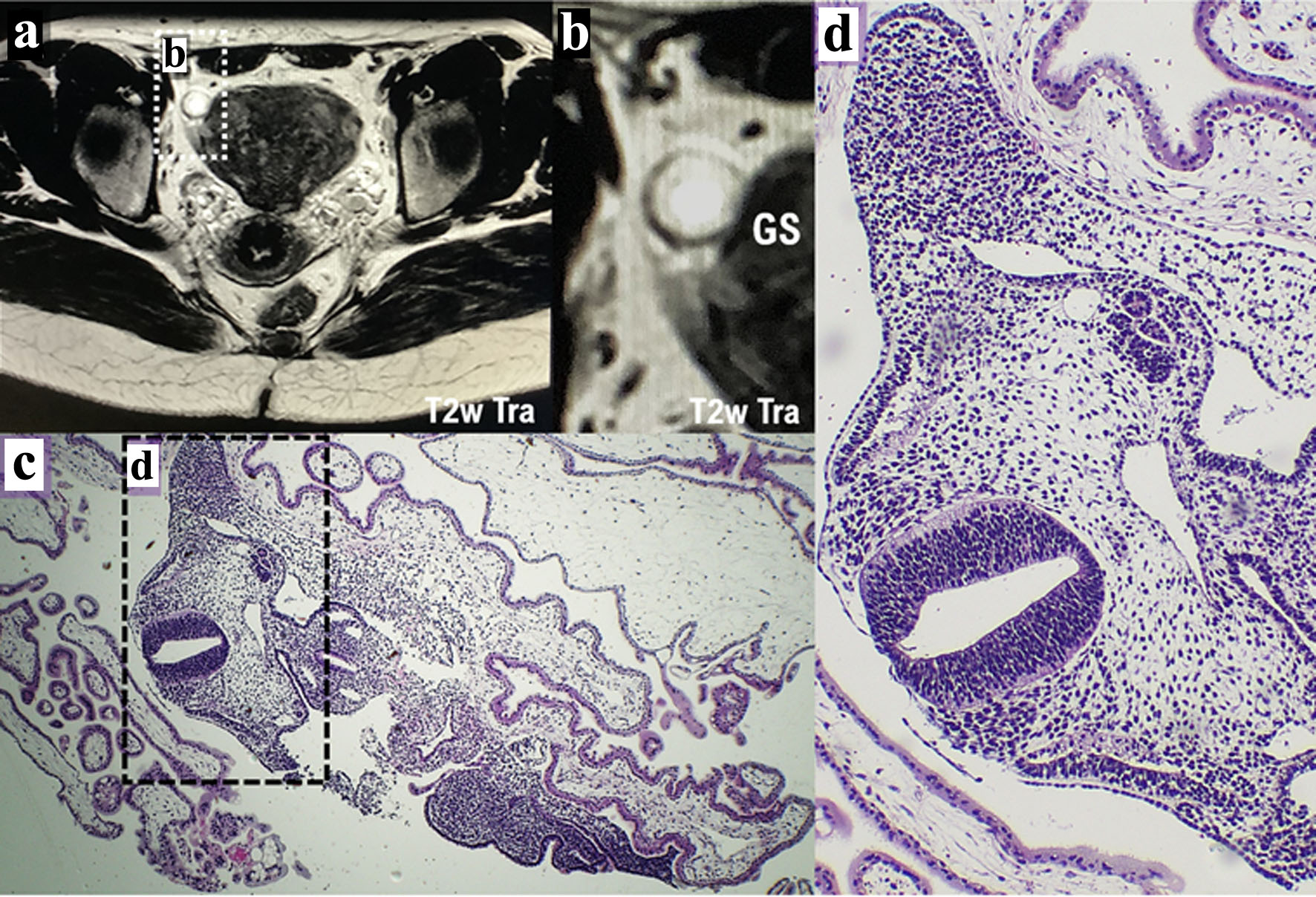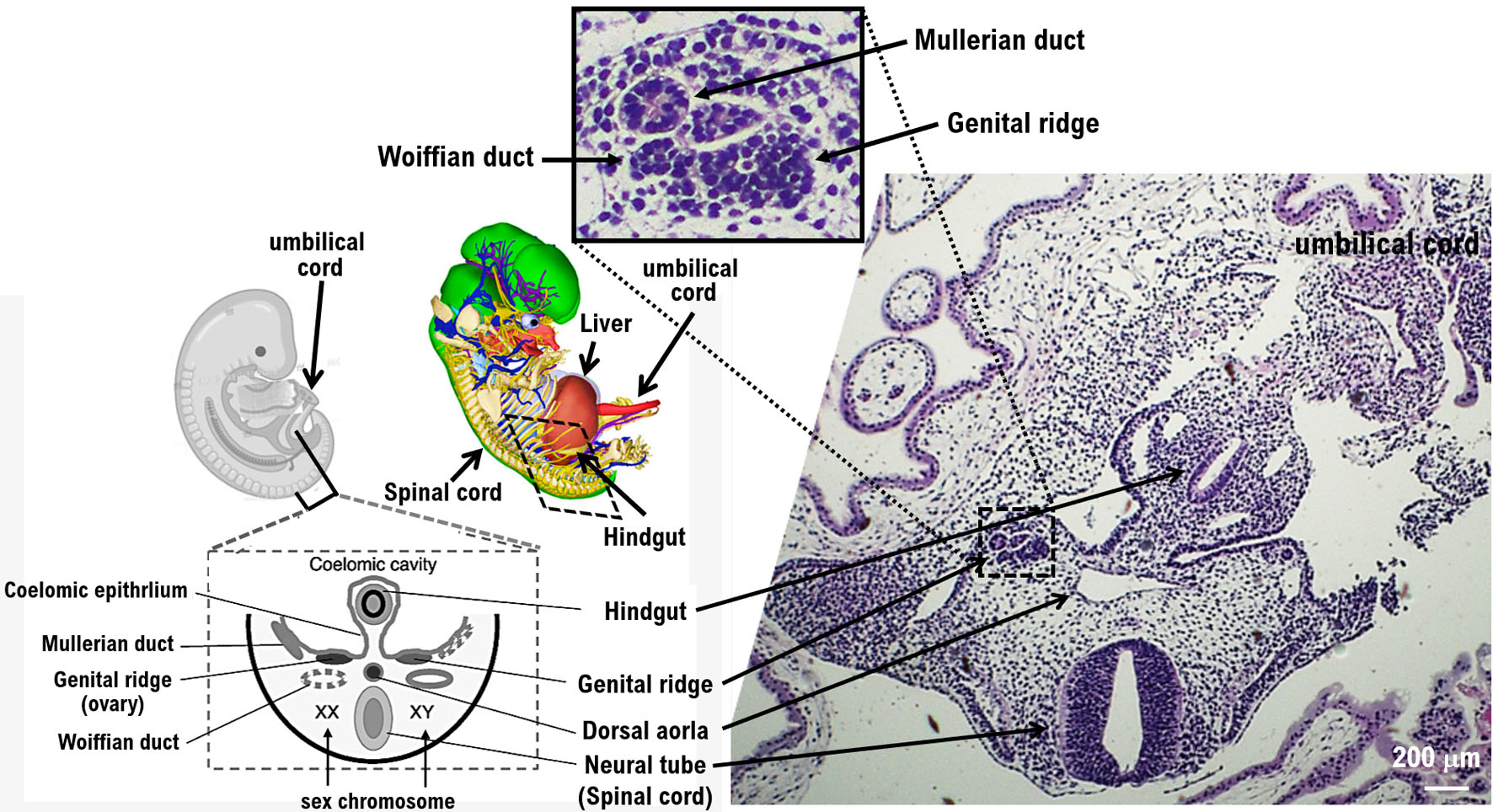
Figure 1. Diagnosis of ectopic pregnancy by contrast-enhanced MRI and histopathological examination. (a) The result described from contrast-enhanced MRI examination (T2w Tra) shows the possibility of ectopic pregnancy. The white dotted area shown in a is presented as panel b. (b) The GS in the right fallopian tube is indicated by a white spherical structure. Ectopic pregnancy was suspected because MRI showed a cystic lesion with ring-shaped diffusion restriction and contrast enhancement in the right fallopian tube. (c) A specimen of the resected right fallopian tube was used for pathological diagnosis. The black dotted area shown in panel c is presented as panel d. (d) Histopathological examination reveals the histology of the developing fetus during the growth period. GS: gestational sac; MRI: magnetic resonance imaging.
